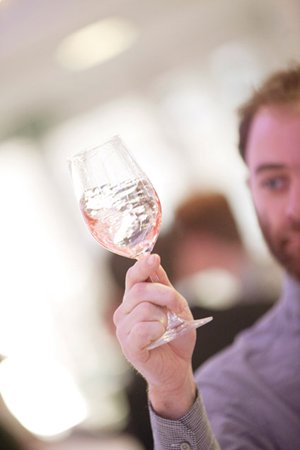Champagne Vintage
A series of wines from more approachable vintages led our tasters to muse on whether these Champagnes are still being made to age
Sometimes, sommelier tasters reach into the John Motson Book of Football Clichés to explain what they’re seeing. ‘It was a tasting of two halves,’ mused Hakkasan Group’s Christine Parkinson after a first-round tasting of vintage champers.
‘Half of the wines were clumsy or one-dimensional.’
 Which, at these prices and assumed levels of prestige, is a bit like paying to watch Brazil and seeing them perform like Bradford City.
Which, at these prices and assumed levels of prestige, is a bit like paying to watch Brazil and seeing them perform like Bradford City.
Interestingly, in fact, price wasn’t necessarily an indicator of quality. One of the most universally popular wines was the Deutz Blanc de Blancs 2007, which was also one of the cheapest in the category. Though, as has often been the case in the past, Lallier’s Grand Cru was comfortably the best-priced medal winner.
As with all the sparkling wine flights, our tasters found themselves confronted with a broad spread of styles – but one theme came up across the teams: the idea that winemakers are creating wines that are ready to drink more or less on release.
‘It takes a very good Champagne to evolve into a good aged wine,’ said consultant Jade Koch. ‘I think more winemakers are trying to make wines that are drinking well younger in vintage Champagne.’
It could, of course, be the character of the various vintages. 2002, for instance was tight and crystalline whereas many of this year’s entries were from the more accessible 2005 vintage.
Not, of course, that ‘instant drinkability’ is a bad thing for the on-trade. ‘The wines have to be balanced. The acidity can’t stick out. They need to be integrated,’ said Ubiquitous Chip’s Richard Masterson.
Arguably, the biggest issue for vintage fizz, however, is less style than where it sits on a list. ‘These days it’s either party fizz or the very top end,’ commented The Marylebone Hotel’s Mark Deamer. ‘In between is a hard sell.’
And while the trade might go crazy for certain vintages, such niceties are way off the radar of your average punter. ‘People look for quality in a name rather than a vintage,’ said Masterson. ‘I don’t think anyone has ever asked me for a specific vintage.’
In which case, the two wines picked blind for the Gold List would do nicely. Two big names in very different styles.
The Taittinger 2005 was described by Vinoteca’s Charles Young as: ‘Very fresh and citrusy throughout, yet intense with great balance – we felt this would be a great aperitif or with salads and light summer dishes.’
The Charles Heidsieck Blanc des Millennaires meanwhile, with its 18 years of ageing, was loved by Mark Graham of OXO Tower, for its ‘richer, fuller style. This was a food wine, and would sustain the course with oysters, fish dishes and much more besides.’
‘A lot of vintage Champagnes are being forced to be more approachable. Too many were just not interesting.’
Mark Deamer, The Marylebone Hotel